Common Types of Garden Snails. With the help of this detailed guide, you can recognize various varieties of common garden snails. Learn critical traits and insider knowledge to distinguish between different species of snails. Prepare to master the art of identifying snails in your yard!
Are you an avid gardener who gets annoyed when you see snails chewing on your plants and wonders what type they are? Be at ease now! You will have the expertise to recognize common garden snail types like a pro after reading this comprehensive tutorial. Understanding these slimy organisms will help you manage your garden more skillfully, regardless of whether you’re an experienced gardener or just getting started. Investigate the intriguing world of garden snails now!
A Manual for Recognizing Common
Garden snails are gastropods known for their slow-moving and shell-covered bodies. They are often found in gardens and are notorious for their plant-eating habits. Each snail species has unique characteristics that set them apart from one another. Below, we’ll delve into the specific features of different garden snail types to help you distinguish them effectively.
1. The Brown Garden Snail (Helix aspersa)
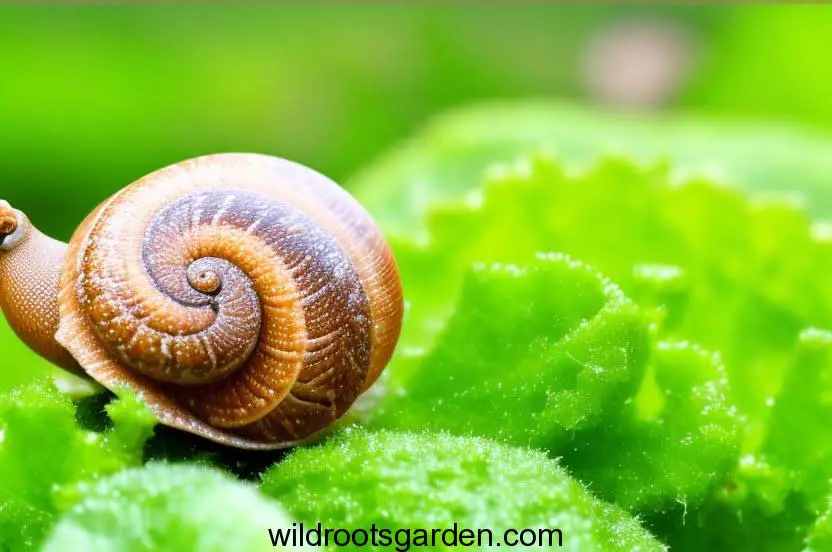
One of the most prevalent snail species to be found in gardens around the world is the brown garden snail, commonly known as Helix aspersa. Its light brown shells and black spiral decorations make them simple to identify. These snails have a ravenous appetite and, if left unchecked, can seriously harm plants.
Description: The Brown Garden Snail features a conical shell with distinct dark bands wrapping around it. Its body color can vary from light to dark brown. They secrete a slimy mucus to glide smoothly on surfaces.
2. The Grove Snail (Cepaea nemoralis)
The Grove Snail, Cepaea nemoralis in scientific jargon, is a little and vibrant snail that dwells in a variety of environments, including gardens, wooded areas, and meadows. They are distinguished from other kinds of snails by their distinctive shell patterns.
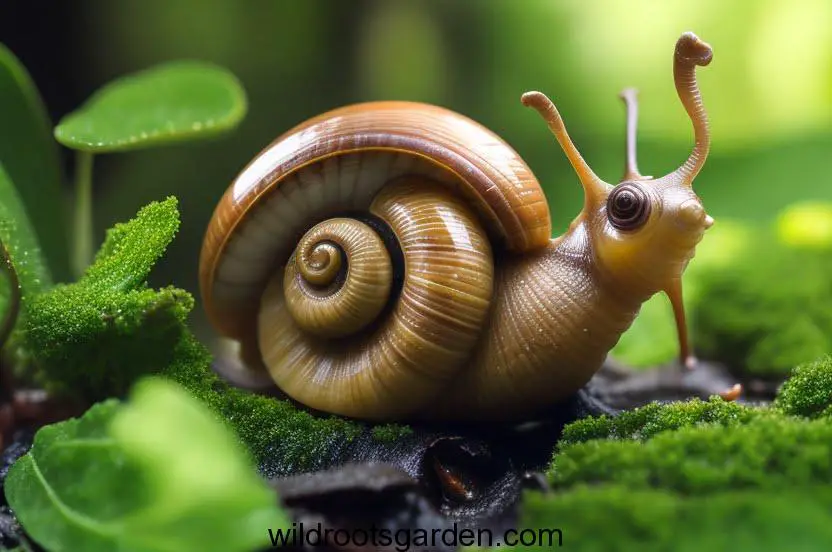
Description: The Grove Snail’s shell is dextral, meaning it coils in a clockwise direction. The shell comes in various colors such as yellow, pink, brown, and even white, with distinctive dark bands or stripes.
3. The White-Lipped Snail (Cepaea hortensis)
Another frequent garden snail with a cute appearance is the White-Lipped Snail or Cepaea hortensis. It is frequently mistaken for the Grove Snail due to their similarity.
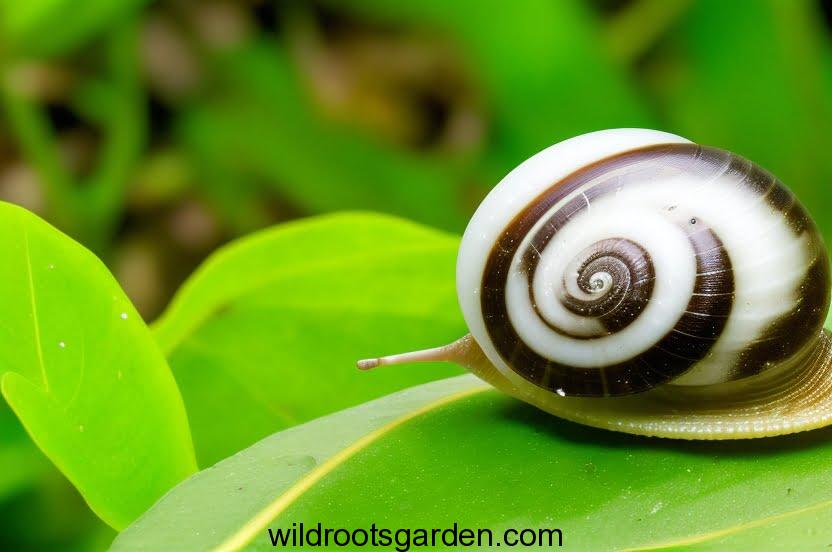
Description: This snail species has a sinistral shell, coiling counterclockwise, unlike the Grove Snail. Its shell has a white lip around the opening, which gives it its name. The shell color can range from light brown to reddish-brown, and it often has a dark band on the last whorl.
4. The Roman Snail (Helix pomatia)
Large and stately, the Roman Snail, or Helix pomatia in technical jargon, is a common sight in rural and garden settings. It is simple to recognize due to its unusual appearance.
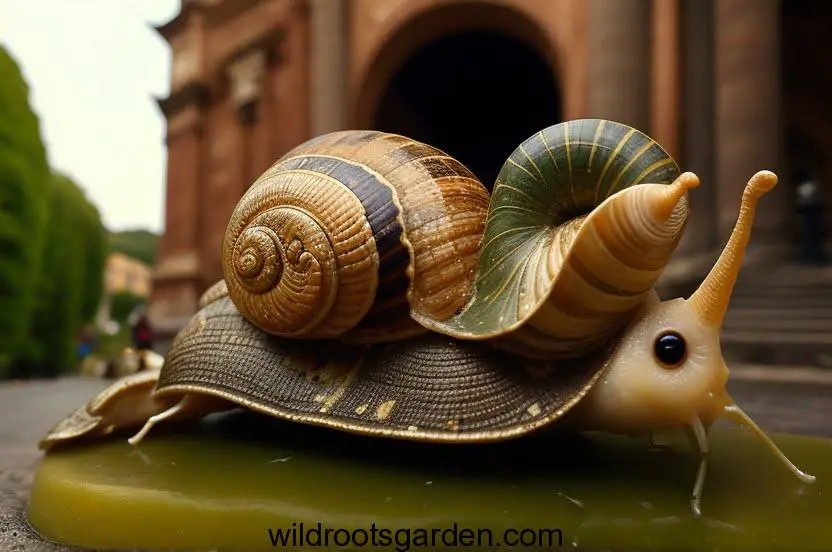
Description: The Roman Snail has a big, spherical shell with prominent light and dark bands. Its body is creamy white, and it moves at a relatively slow pace.
5. The Garden Banded Snail (Cepaea nemoralis)
The Garden Banded Snail, also known as Cepaea nemoralis, is a highly variable snail species that comes in various shell colors and patterns.
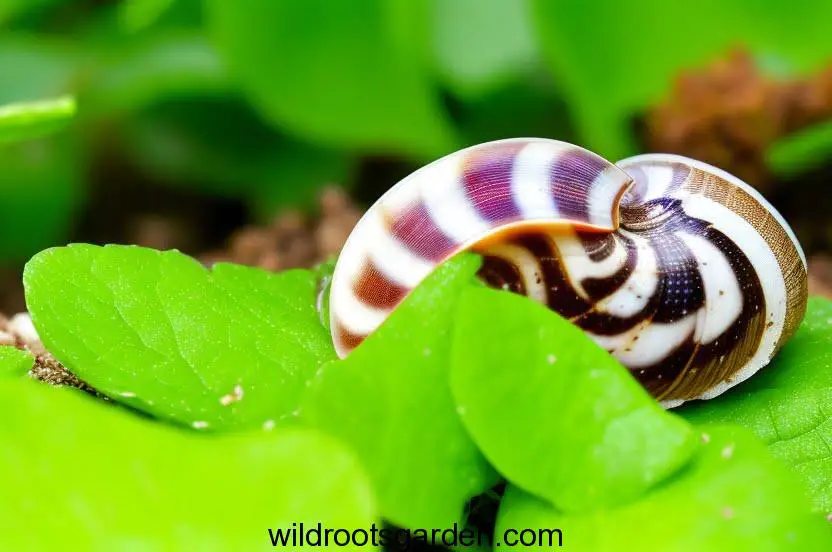
Description: The Garden Banded Snail has a dextral shell with bands or stripes of different colors, including brown, yellow, pink, and white. The shell may have one or more dark bands encircling it.
6. The Heath Snail (Xerolenta obvia)
A little snail with the scientific name Xerolenta obviates, the heath snail is typically found in gardens and heathlands with sandy soils.
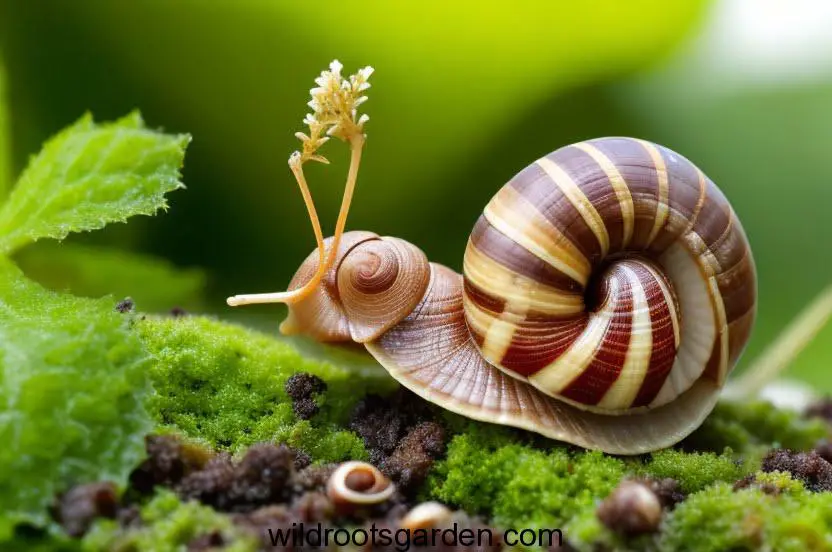
Description: This snail species has a dextral shell with a conical shape and fine, irregular growth lines. Its color can range from yellowish to reddish-brown, and it may have darker spiral bands on the shell.
7. The Vineyard Snail (Cernuella virgata)
A little species of snail known as the Vineyard Snail, or Cernuella virgate, is frequently found in gardens and vineyards with a Mediterranean climate.
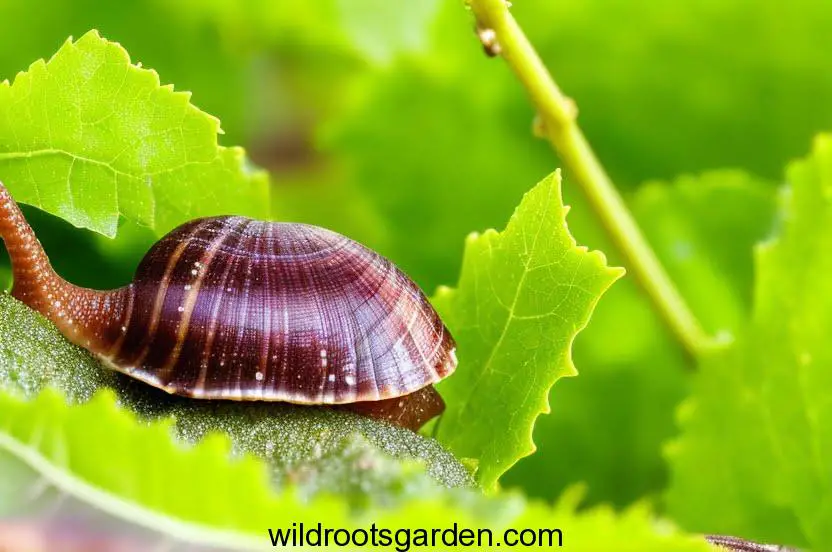
Description: This snail has a small, conical shell that is usually light brown or grayish with fine growth lines. It lacks distinct banding, making it relatively easy to identify.
8. The Glass Snail (Oxychilus draparnaudi)
Oxychilus draparnaudi, sometimes known as the Glass Snail, is a tiny, translucent snail that lives in damp, shaded regions of gardens.
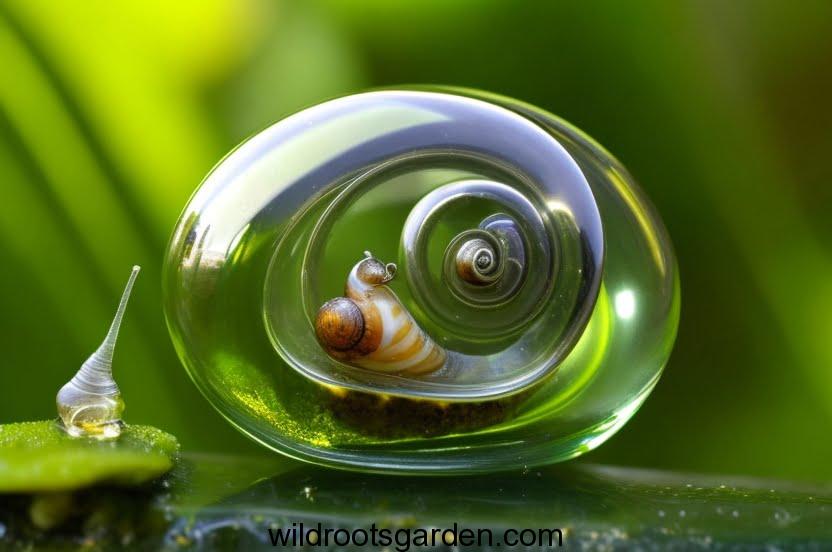
Description: The Glass Snail’s shell is barely visible due to its transparency. It has a distinctive blue-gray body with visible internal organs.
9. The Strawberry Snail (Trochulus stratus)
The strawberry snail, or Trochulus striolatus as it is scientifically known, is a diminutive and endearing snail that is frequently observed in gardens with lots of greenery.
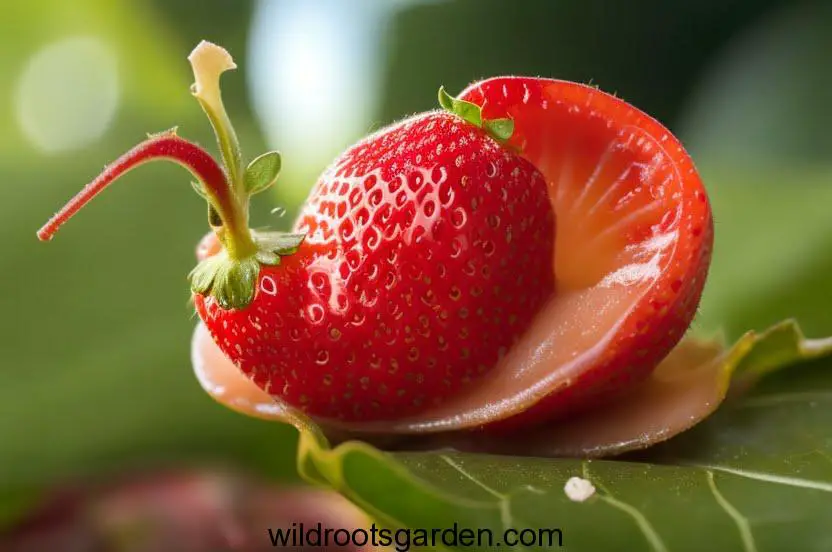
Description: This snail species has a dextral shell with distinct brownish-red stripes running vertically. Its shell is globular, and its body is usually a mix of light brown and gray.
10. The Wrinkled Dune Snail (Truncatellina claustralis)
The Wrinkled Dune Snail, or Truncatellina claustralis, is a minute snail species that prefers sandy habitats and is occasionally found in gardens.
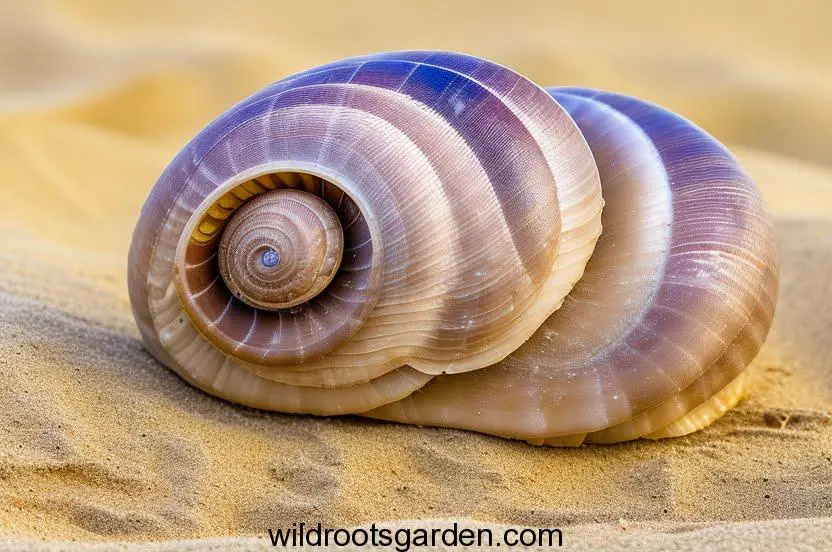
Description: This snail has a small, elongated shell with fine growth lines, giving it a wrinkled appearance. It is usually light brown or yellowish, blending well with sandy environments.
11. The Garden Slug (Arion distinctus)
The Garden Slug, scientifically named Arion distinctus, is not a snail but belongs to the same group of gastropods. Slugs lack shells but are equally prevalent in gardens.
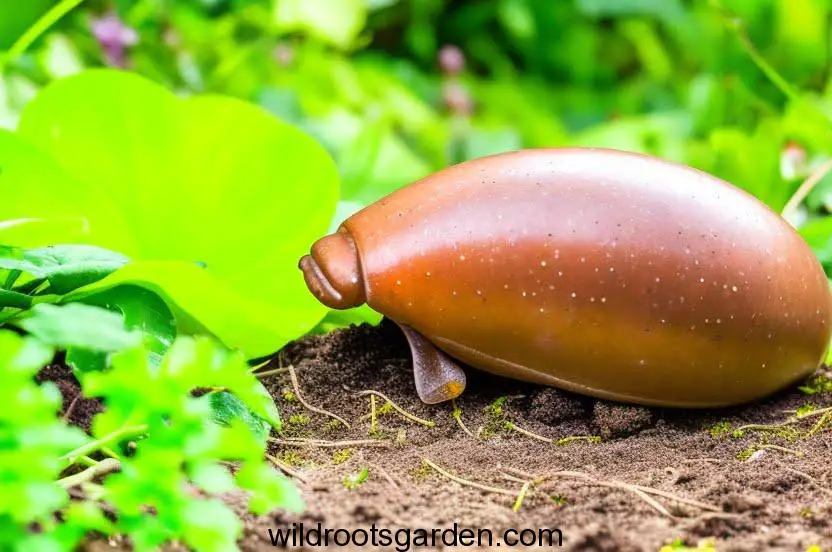
Description: The Garden Slug has a slimy, elongated body with no visible shell. It varies in color, from gray and brown to orange and black.
12. The Leopard Slug (Limax maximus)
The Leopard Slug, also called Limax maximus, is a large and impressive slug species found in gardens and other outdoor areas.
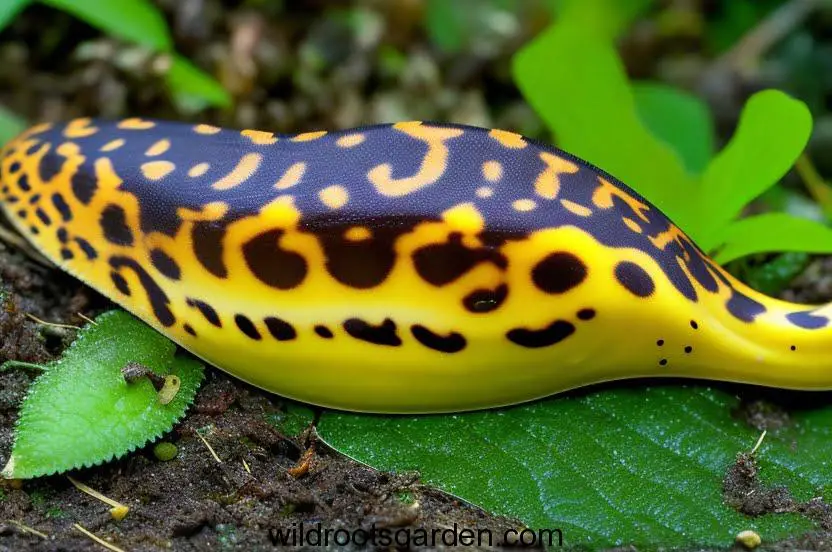
Description: The Leopard Slug has a unique spotted pattern on its body, resembling a leopard’s spots. It can be yellowish, gray, or even black in color.
13. The Spanish Slug (Arion vulgaris)
The Spanish Slug, scientifically known as Arion vulgaris, is a large slug species that can be a nuisance in gardens.
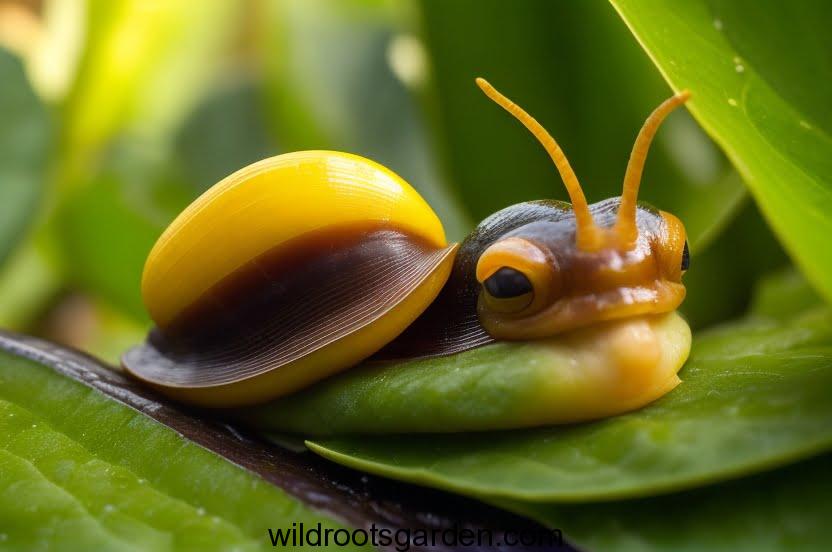
Description: This slug has a slimy, elongated body with a varying color range, from yellow and orange to black. It has no visible shell.
14. The Garden Snail Eggs: A Closer Look
Understanding the lifecycle of common garden snails is crucial for effective identification and control. Let’s take a closer look at their eggs and hatching process.
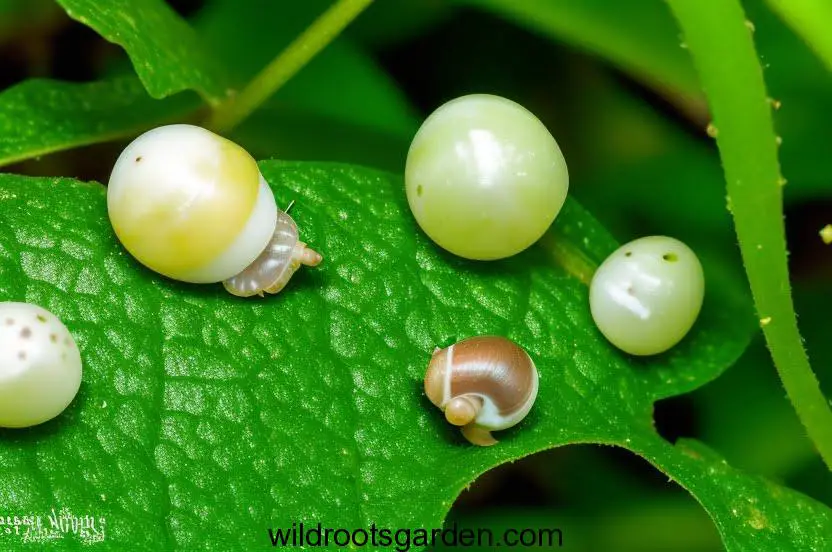
Description: Garden snail eggs are small, round, and translucent. They are laid in clusters, usually hidden in moist areas. After a few weeks, the eggs hatch, and tiny snails emerge.
15. Common Garden Snail Habitats
Various species of garden snails prefer particular types of habitats. You can find and locate them more efficiently if you know what environments they favor.
Description: Garden snails are commonly found in gardens, meadows, woodlands, and areas with abundant vegetation. Some prefer damp and shady spots, while others thrive in sunny and sandy areas.
16. Garden Snail Diet and Feeding Habits
To effectively identify garden snails, it’s essential to understand their feeding habits and the types of plants they prefer.
Description: Garden snails are herbivores and primarily feed on plants. They can eat a wide range of vegetation, including leaves, stems, and flowers, which often leads to damage in gardens.
17. Garden Snail Defensive Mechanisms
Garden snails have evolved a number of defense measures to keep out predators. Identification of these behaviors can be aided by understanding them.
Description: When threatened, garden snails retreat into their shells, using their operculum (a specialized plate) to close the shell’s opening. They also produce a slimy mucus to deter predators.
18. Garden Snail Reproduction and Mating Behaviors
Understanding the reproductive and mating habits of garden snails might help you detect snail colonies in your garden.
Description: Garden snails are hermaphrodites, meaning they possess both male and female reproductive organs. During mating, they exchange sperm, and each snail can lay eggs after the process.
19. The Garden Snail’s Role in Ecosystems
While garden snails may be perceived as pests, they play essential roles in ecosystems. Understanding these roles can foster a deeper appreciation for these creatures.
Description: Garden snails serve as decomposers, breaking down organic matter and contributing to nutrient cycling in ecosystems. They are also a source of food for various predators.
20. How to Control Garden Snail Populations
A healthy garden requires careful management of the snail population. Learn how to reduce the number of snails using eco-friendly and successful ways.
Description: Methods like handpicking, introducing natural predators, and using physical barriers are effective in controlling garden snail populations without harming the environment.
21. Common Garden Snail Look-Alikes
Accurate identification of garden snails requires separating them from species that resemble them. Find out how to distinguish common snail imposters.
Description: Some insects and other gastropods mimic garden snails in appearance, making identification challenging. Knowing the differences in body structure and behavior can help in accurate identification.
22. Garden Snail Conservation and Protection
While managing garden snail populations is essential, conservation efforts are also necessary to protect certain snail species facing threats.
Description: Some garden snail species may be endangered or rare, warranting conservation measures to preserve their habitats and ensure their survival.
23. Dealing with Garden Snail Infestations
In certain situations, garden snails can become overwhelming, causing infestations that require immediate attention and action.
Description: Infestations can be addressed through targeted control methods, limiting the snail’s access to favored plants, and maintaining a well-balanced garden ecosystem.
24. Tips for Observing Garden Snails
Garden snail observation can be entertaining and instructive. Use these pointers to observe snails safely and responsibly.
Description: Patience, respect for the snail’s space, and a keen eye for details are essential when observing garden snails in their natural habitat.
25. A Guide to Snail-Friendly Gardening
By using gardening techniques that are snail-friendly and reduce conflict, you may encourage peaceful coexistence with garden snails.
Description: Creating diverse habitats, using companion planting, and providing shelter for natural predators are just some ways to encourage a balanced garden ecosystem.
FAQs:
Do all garden snail species have shells?
Yes, all garden snail species belong to the gastropod group, characterized by their spiral-shaped shells.
Can garden snails harm humans?
While most garden snails are harmless to humans, some can carry parasites that can cause infections if handled improperly.
Are garden snails good for the environment?
Yes, garden snails play a crucial role in ecosystems as decomposers and a food source for various animals.
How can I attract natural snail predators to my garden?
Planting diverse vegetation and providing water sources can attract natural predators like birds, frogs, and predatory insects.
Can I use chemical pesticides to control garden snail populations?
While chemical pesticides can be effective, they may also harm beneficial insects and disrupt the garden ecosystem. Consider eco-friendly alternatives first.
Why are some garden snail species considered endangered?
Habitat loss, pollution, and climate change are some of the factors contributing to the decline of certain garden snail populations.
Conclusion:
Armed with this comprehensive guide, you’re now equipped to identify and understand the various common garden snail types that may be present in your garden. Remember to observe and appreciate these fascinating creatures while employing responsible and eco-friendly gardening practices. By striking a balance between managing snail populations and preserving their habitats, you can create a flourishing garden that thrives in the presence of these slimy yet vital contributors to our ecosystem.

